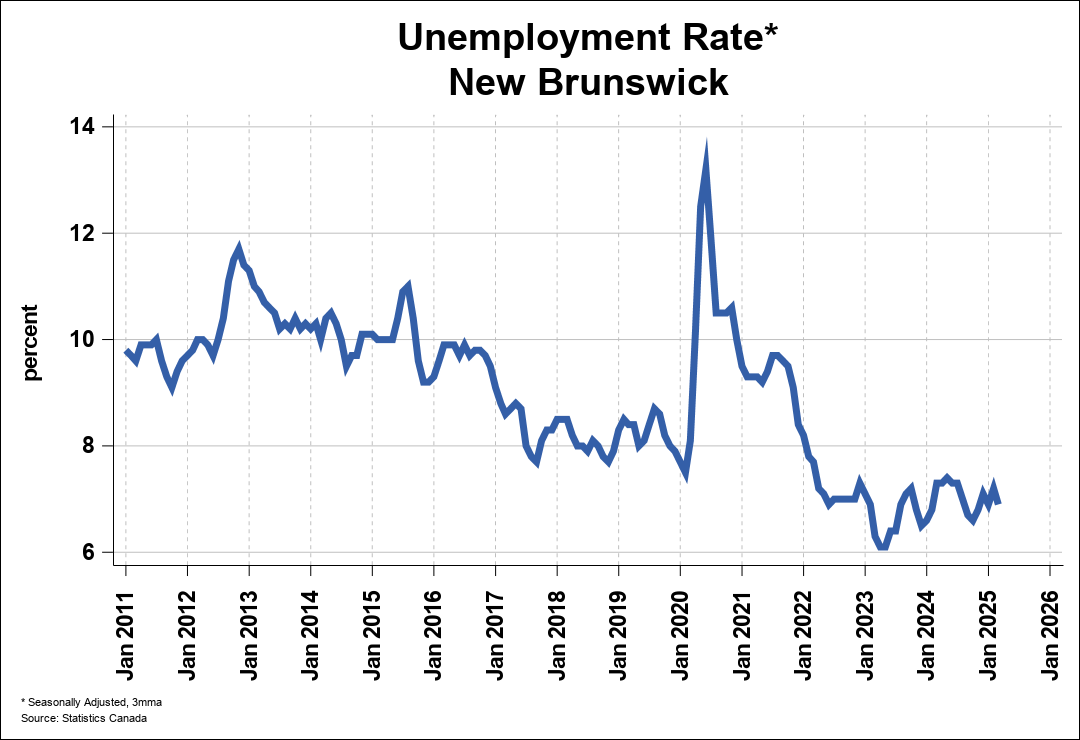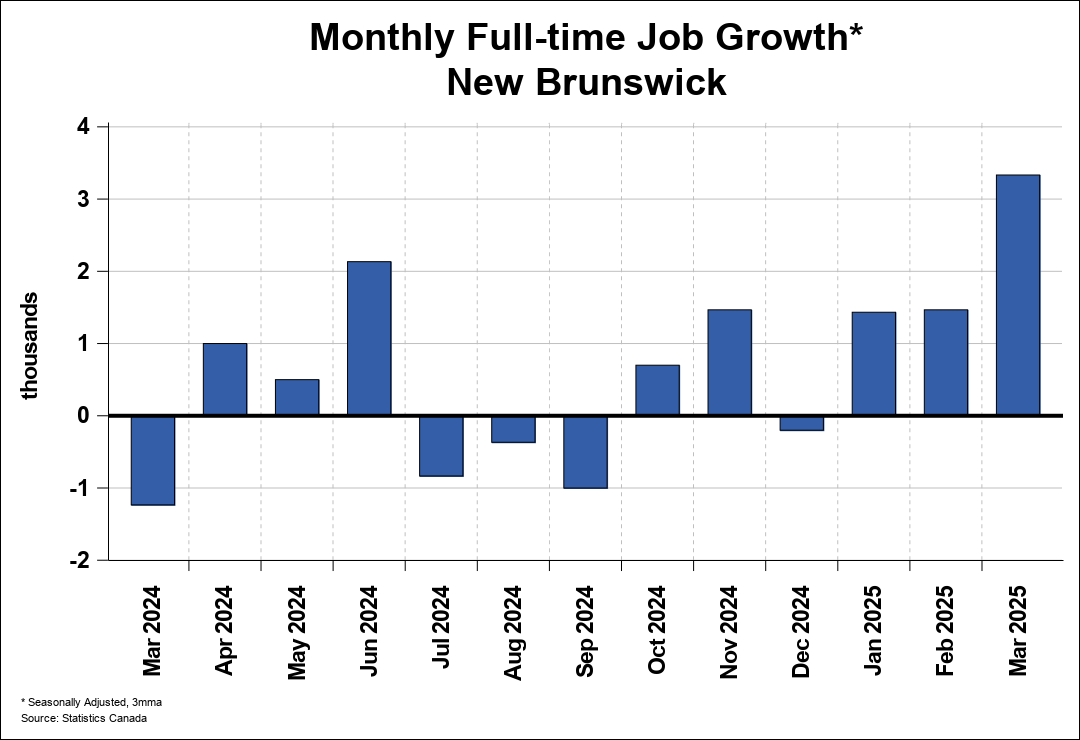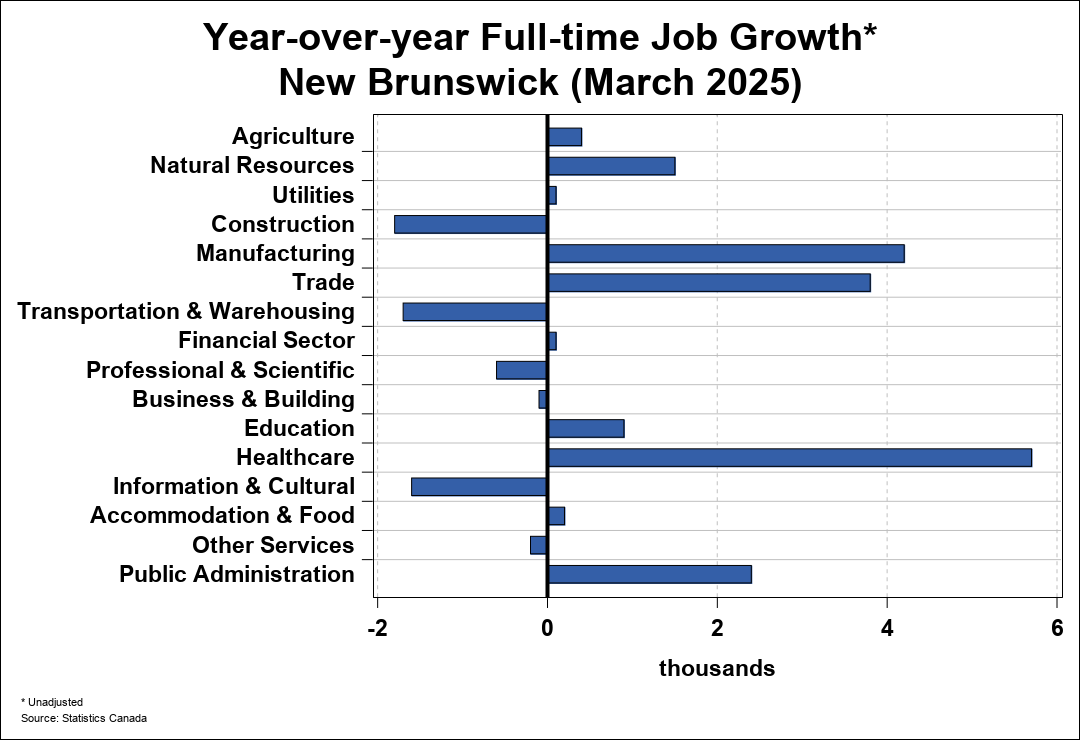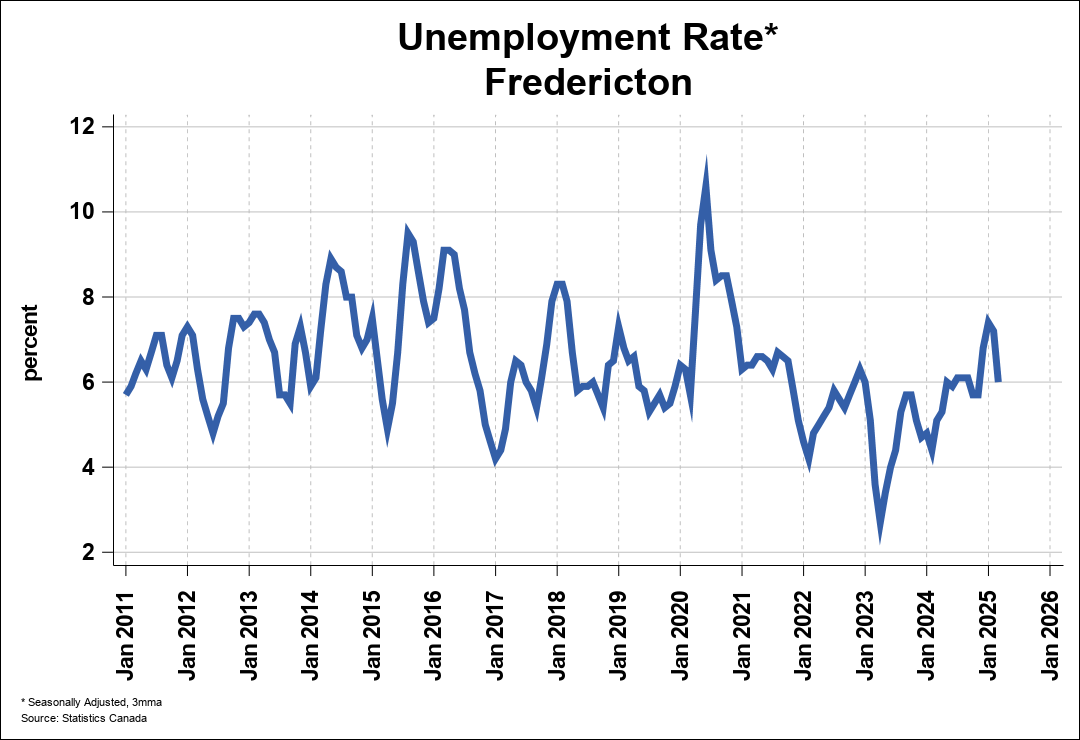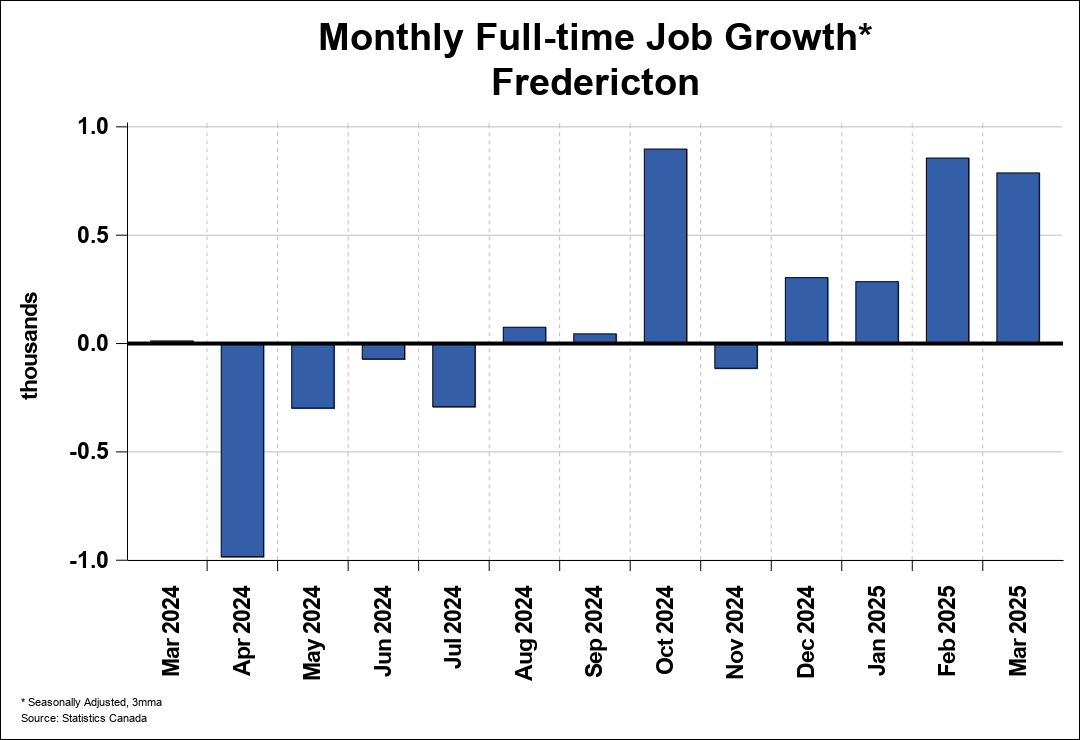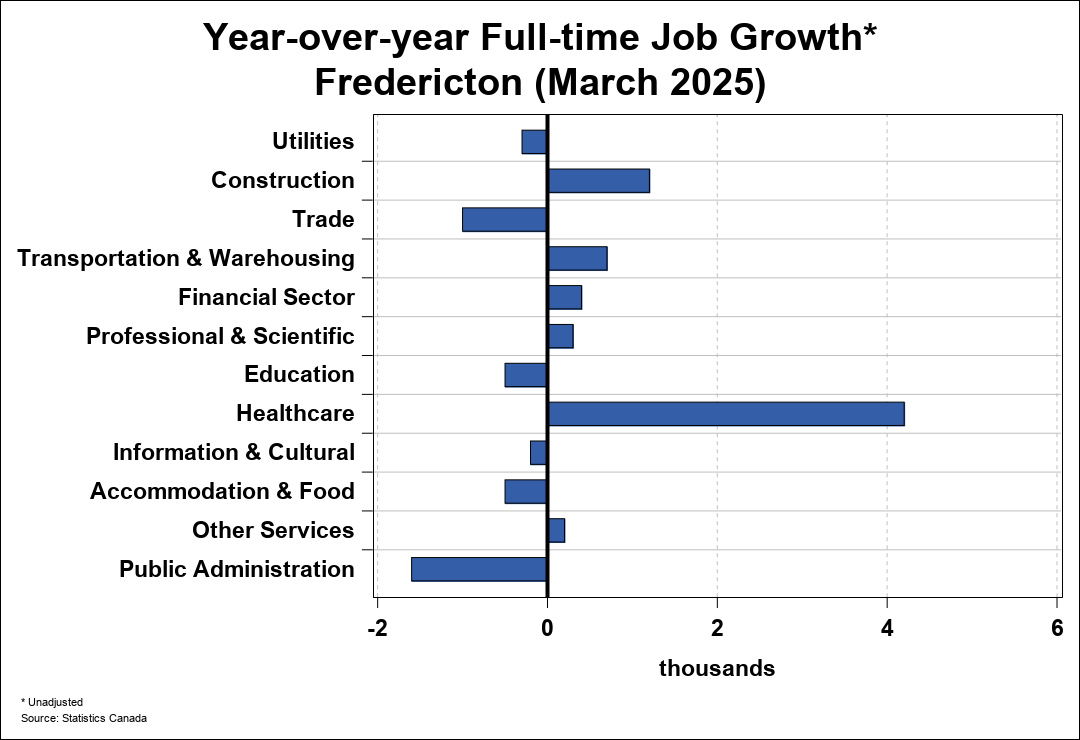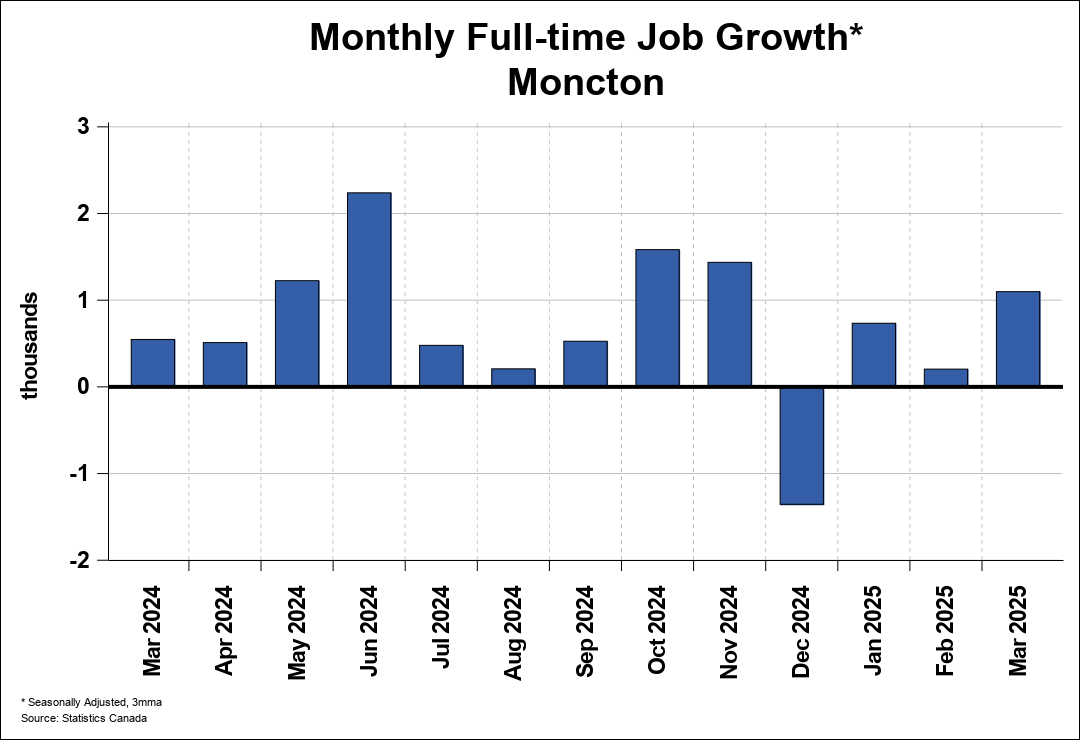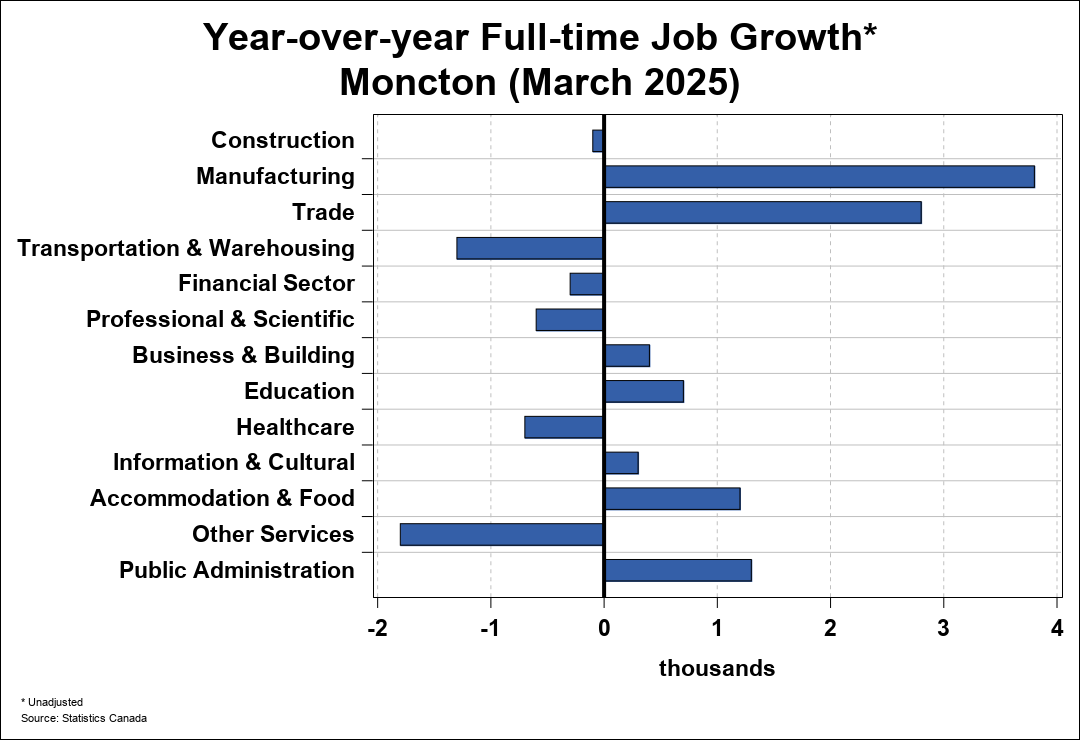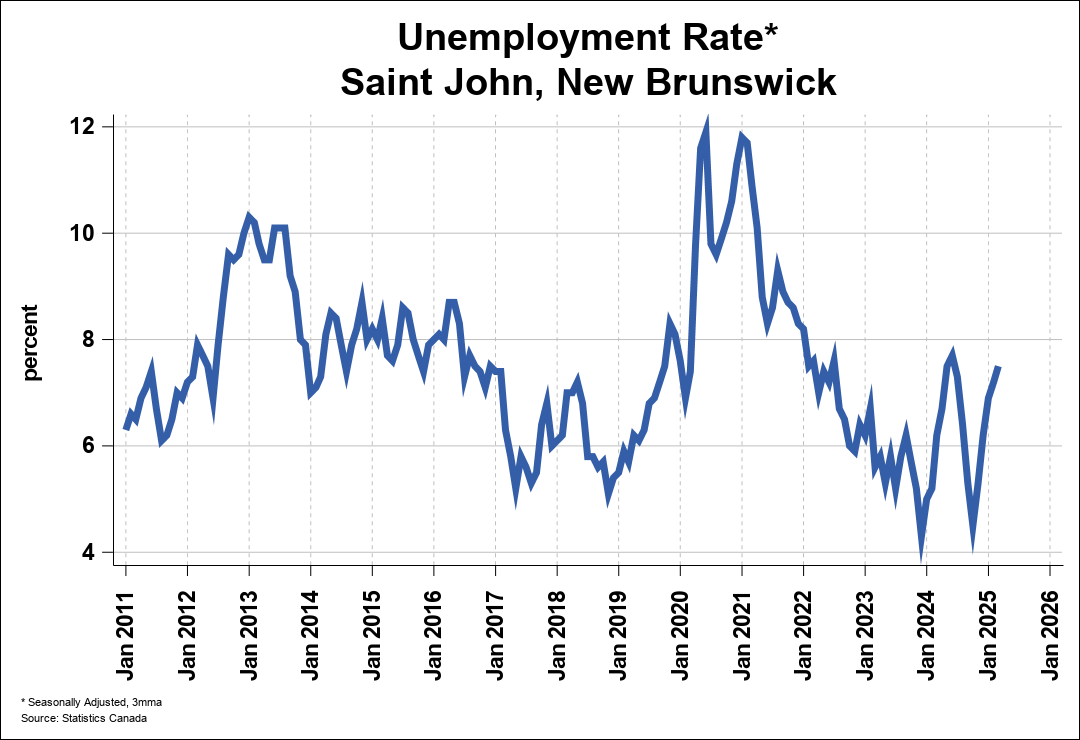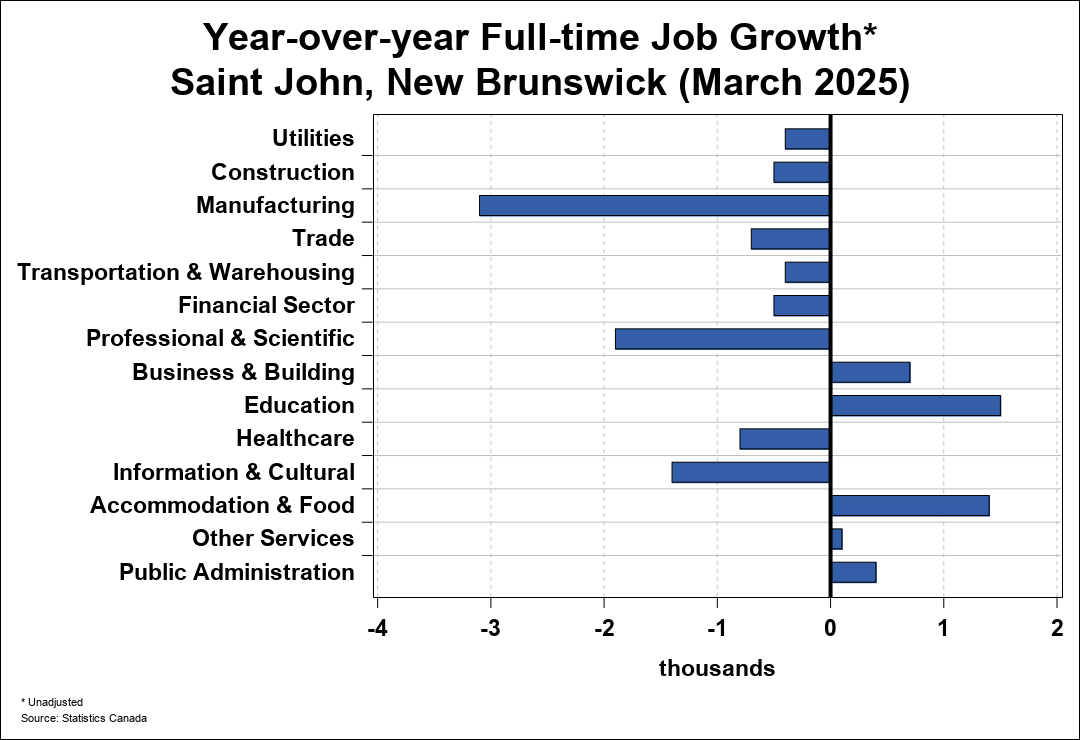New Brunswick Employment Trends
The unemployment rate in New Brunswick was 7.9% as of October 2025, up 0.2% from the previous month. The unemployment rate stood 5.3% below the peak from June 2020 and is below the long-run average.
There were 800 more full-time jobs in October 2025 compared to a month earlier. Combined with a loss of 1,900 part-time positions, this led to a decrease of 1,100 total jobs in October.
Full-time employment was still down 3,400 jobs from the peak in June 2025 but stood 800 jobs above the trough in September 2025.
* All figures are seasonally adjusted, 3-month moving averages. Seasonal adjustment removes normal seasonal fluctuations.
Fredericton Employment Trends
The unemployment rate in Fredericton was 6.7% as of October 2025, unchanged from the previous month. The unemployment rate stood 3.9% below the peak in June 2020 but remains above the long-run average.
There were 500 more full-time jobs in October 2025 compared to a month earlier. Combined with a loss of 600 part-time positions, this led to a decrease of 100 total jobs in October.
Full-time employment was still down 1,700 jobs from the peak in April 2025 but stood 900 jobs above the trough in July 2025.
* All figures are seasonally adjusted, 3-month moving averages. Seasonal adjustment removes normal seasonal fluctuations.
Moncton Employment Trends
The unemployment rate in Moncton was 7.2% as of October 2025, down 0.1% from the previous month. The unemployment rate stood 3.3% below the peak from June 2020 but remains above the long-run average.
There were 500 more full-time jobs in October 2025 compared to a month earlier. Combined with a loss of 100 part-time positions, this led to an increase of 400 total jobs in October.
Full-time employment was still down 3,900 jobs from the peak in March 2025 but stood 500 jobs above the trough in September 2025.
* All figures are seasonally adjusted, 3-month moving averages. Seasonal adjustment removes normal seasonal fluctuations.
Saint John, New Brunswick Employment Trends
The unemployment rate in Saint John, New Brunswick was 7.8% as of October 2025, up 0.2% from the previous month. The unemployment rate stood 4.1% below the peak from June 2020 but remains above the long-run average.
There were 500 more full-time jobs in October 2025 compared to a month earlier. Combined with a loss of 1,200 part-time positions, this led to a decrease of 700 total jobs in October.
Full-time employment was still down 3,700 jobs from the peak in April 2024 but stood 2,400 jobs above the trough in January 2025.
* All figures are seasonally adjusted, 3-month moving averages. Seasonal adjustment removes normal seasonal fluctuations.
